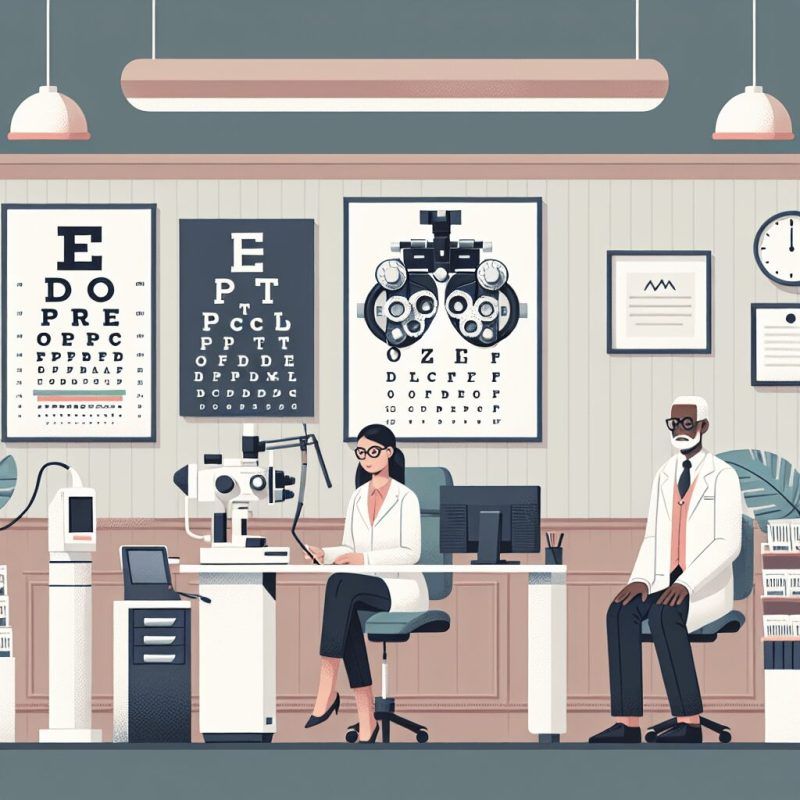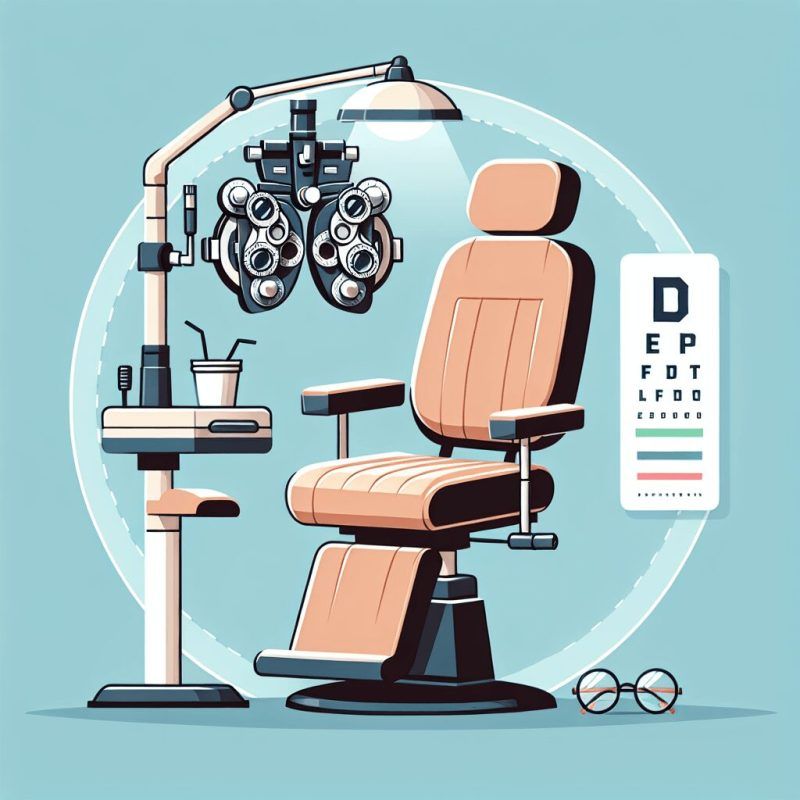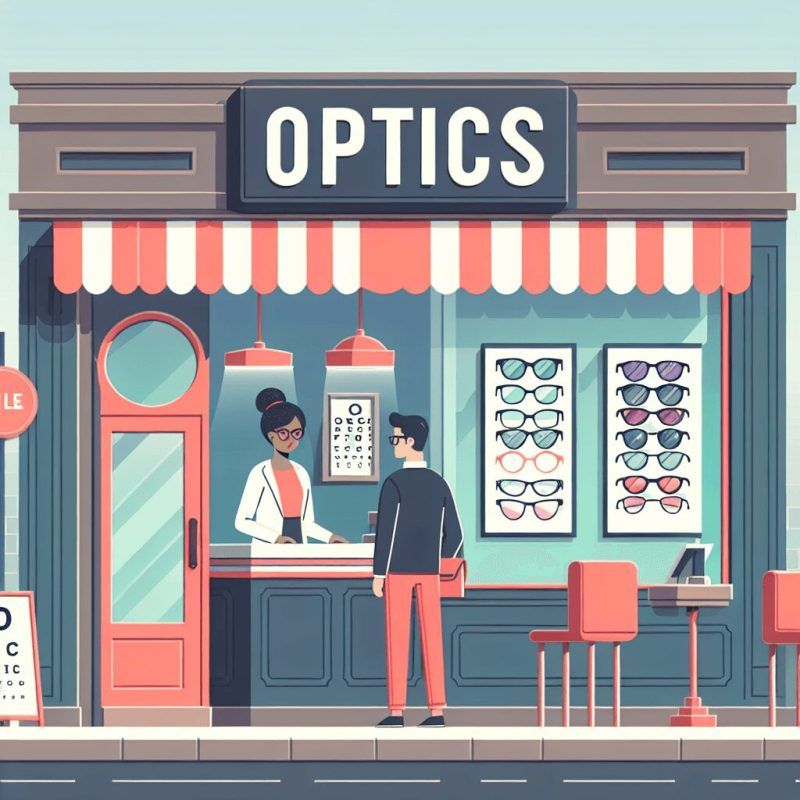Doctor's Corner
Exploring Different Options for Your Spectacle Prescription
Are you looking for new glasses but not sure where to start? Exploring different options for your prescription can be overwhelming. Deciding on the right frame shape and understanding lens coatings can be daunting.
This article will break down the basics of selecting the perfect glasses for your needs. By the end, you will feel confident in choosing the best option for your eyesight.
Laser Eye Surgery
Laser eye surgery, like LASIK or PRK, reshapes the cornea to improve vision and reduce the need for glasses or contact lenses. It’s a popular method for correcting myopia or astigmatism.
The procedure offers permanent vision improvement, but there are risks like infection, dry eyes, or corneal irregularities. Recovery time varies, usually from a few days to a few weeks.
Consulting an eye doctor is important to decide if laser eye surgery is the right option. Regular eye exams and good hygiene are crucial post-surgery to monitor progress and prevent issues.
Staying informed about clinical trials and research in refractive surgery can offer insights into new treatments and advances in eye care.
Orthokeratology
Orthokeratology, also known as ortho-k, uses special lenses worn overnight to reshape the cornea and improve vision. It helps with myopia (nearsightedness) and astigmatism by gently reshaping the cornea for clear vision without glasses or contacts during the day.
Benefits of ortho-k include convenience since the lenses are worn while sleeping and lower infection risks compared to daytime contact lens wear. However, there are risks like corneal infection if hygiene practices are not followed.
Unlike LASIK or PRK surgery, orthokeratology is non-invasive, making it a preferred choice for some people. It’s important to consult an eye doctor to choose the best vision correction method based on individual needs and lifestyle.
Implantable Lenses
Implantable lenses are an option for correcting vision. They can help with myopia, astigmatism, and presbyopia.
These lenses use less energy and can be reversed if needed compared to laser surgery. However, factors like myopia progression, prescription stability, and treatment cost must be considered.
Surgery is required for implanting lenses, so infection risk and other issues should be considered. Consulting an eye doctor and exploring options such as ortho-k and corneal inlays is a good idea for making informed choices.
Implantable lenses are a promising choice for vision correction and are worth discussing with eye care professionals.
Corneal Inlays
Corneal inlays can help correct vision for people with myopia or astigmatism. They reduce the need for glasses or contact lenses. They offer a more permanent solution with less daily maintenance than glasses or contacts.
Corneal inlays are different from laser eye surgery or lenses because they are less invasive. The procedure does not permanently change the shape of the cornea. However, there are risks like infection or corneal health issues.
Before choosing corneal inlays, it’s important to consult with an eye doctor. Understanding the risks is crucial. Regular eye check-ups are also recommended to monitor any issues and ensure long-term eye health.
Modern Vision Correction
Modern vision correction technology has advanced significantly in recent years. Patients now have various alternatives to traditional glasses and contact lenses. Options include laser eye surgery, orthokeratology, implantable lenses, and corneal inlays. These provide effective solutions for common vision problems like myopia, astigmatism, and presbyopia.
Individuals can determine the right treatment by consulting with an eye doctor. The doctor can assess their vision needs through comprehensive eye exams and digital retinal imaging. Factors like myopia progression, eye coordination issues, and risks of eye diseases such as glaucoma and cataracts are considered during the decision-making process.
FDA-approved treatments like low-dose atropine drops, specialized vision therapy, and refractive surgeries are part of the available modern vision correction methods. Ongoing research, clinical trials, and advancements in hygiene practices, such as disposable lenses, enhance the safety and effectiveness of these treatments.
Categories
Keratoconus and Scleral Lenses
Scleral lenses can help individuals with keratoconus. This eye condition makes the cornea thin and causes vision problems.
These lenses cover the cornea, creating a smooth surface. They correct vision issues caused by the irregular corneal shape in keratoconus.
Benefits of scleral lenses include better vision , less glare, and increased comfort compared to glasses or regular contact lenses.
When fitting scleral lenses, it’s important to consider the shape of the cornea, the severity of keratoconus, and other eye problems like astigmatism or dry eyes.
Seeing an eye doctor who specializes in fitting scleral lenses is important for a proper fit, comfort, and the best vision correction.
Vision Therapy
Vision therapy is a non-invasive treatment method aimed at improving vision problems without the need for glasses or contact lenses. It involves a series of eye exercises and activities designed to enhance eye coordination, focusing abilities, and overall vision quality. This approach is particularly beneficial for individuals with conditions like myopia, astigmatism, or eye strain caused by excessive screen time.
Vision therapy can also target issues related to eye coordination and help improve vision in children with childhood myopia. While generally safe, some potential side effects of vision therapy include eye strain and temporary discomfort as the eyes adapt to the exercises. It is important to consult with an eye doctor or ophthalmologist before starting any vision therapy program to ensure it is the right choice for your specific needs.
Through research, clinical trials, and FDA-approved techniques, vision therapy continues to be a promising vision correction method with minimal risk and potential for long-term benefits.
Dry Eye Therapy
Managing dry eye syndrome involves more than just traditional lenses and glasses. Patients have options like laser eye surgery, corneal inlays, and orthokeratology.
Individuals can find the right treatment for their needs by consulting an eye doctor and having an eye exam.
Advancements in dry eye therapy now include things like low-dose atropine drops to slow myopia progression, vision therapy, and digital retinal imaging.
These improvements aim to improve vision correction and enhance overall eye care.
It’s important for patients to stay informed about these advances and discuss them with their eye doctor for the best possible results.
Atropine Eye Drops
Atropine Eye Drops are often used to dilate the pupil during eye exams. This helps assess vision and eye health better. They can also treat certain eye conditions like myopia and assist in vision therapy and eye coordination exercises for individuals with vision issues.
However, it’s important to be aware of potential side effects and precautions when using Atropine Eye Drops. These can include:
-
Increased sensitivity to light
-
Blurred vision
-
Eye strain
-
Temporary difficulty focusing on close objects
There is also a risk of infection if proper hygiene practices are not followed when using these drops. Following the advice of an eye doctor is crucial, especially for individuals with conditions like glaucoma, cataracts, or other eye diseases.
Regular eye exams and discussions with an ophthalmologist can help monitor the progression of any eye conditions. This ensures appropriate treatment with Atropine Eye Drops or other vision correction methods.
MiSight
MiSight is a treatment for myopia in children. Unlike glasses or contact lenses, which only correct vision, it slows down the progression of myopia.
The benefits of MiSight include reducing the need for stronger prescriptions and lowering the risk of eye diseases like glaucoma.
Compared to other methods like ortho-k, LASIK, or implantable lenses, it is a non-invasive approach.
MiSight focuses on treating myopia progression in children for healthier eye development.
Consulting an eye doctor and regular eye exams are essential for effective myopia control with MiSight.
Multifocal Contact Lenses
Choosing the Right Treatment
When choosing a vision correction treatment, it’s important to consider various factors:
-
The severity of vision problems
-
The progression of conditions like myopia or astigmatism
-
Eye health history
Lifestyle choices and personal preferences are significant in deciding between:
-
Glasses
-
Contact lenses
-
Laser eye surgery
-
Alternative treatments like orthokeratology or implantable lenses
Each treatment option has its own benefits and risks, such as:
-
Potential side effects like infections or eye strain
-
Risk of overcorrection
Factors to weigh include:
-
Cost of treatment
-
Need for regular eye exams
-
Possibility of long-term complications like glaucoma or cataracts
To make an informed decision, it’s essential to:
-
Consult with an eye doctor or ophthalmologist
-
Discuss the latest research and clinical trials
-
Prioritize hygiene and eye care.
FAQ
How do I know if I need glasses?
If you are experiencing symptoms such as blurry vision, eye strain, headaches, or difficulty reading or driving, schedule an eye exam with an optometrist. Based on your vision tests and overall eye health, they will determine if you need glasses.
What are the different types of lenses available for my prescription?
The different types of lenses available for your prescription include single-vision, multifocal contact lenses, bifocal, trifocal, and progressive lenses. Each type serves a specific purpose, so consult with your eye care professional to determine which type is best for your needs.
Are there alternative options to traditional glasses for my prescription?
Yes, alternative options to traditional glasses for your prescription include contact lenses, prescription sunglasses, and laser eye surgery.
How often should I update my spectacle prescription?
You should update your spectacle prescription every 1-2 years or as recommended by your eye care provider. Regular updates ensure that your vision is properly corrected and any changes are addressed promptly.
Looking for the best eye care options to suit your lifestyle? Look no further than Superior Eye Care in The Woodlands, Texas, and Quality Eye Care in Willowbrook, Texas. Our team of professional optometrists are here to help you find the perfect solution for your eyes. Contact us now to schedule a consultation.
The post Exploring Different Options for Your Spectacle Prescription first appeared on Optometrist in Woodlands & Willowbrook TX.
Doctor's Corner





